Wet Plate Photography Makes Tattoos Disappear
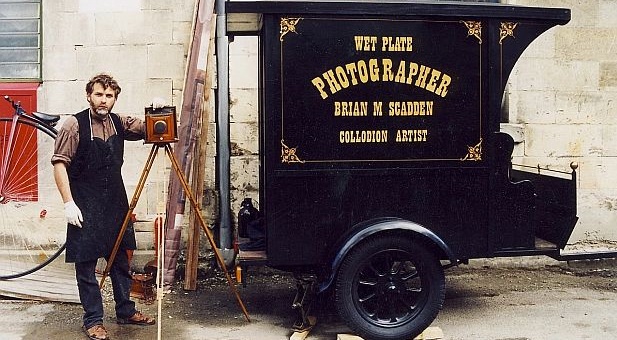
Here’s something you may not have known about the 1800s wet plate collodion photography process: it can make certain tattoos disappear in photos. It’s a curious phenomenon that photographer Michael Bradley used for his portrait project Puaki.

“The idea was first sparked when I saw some wet plate collodion images from photographers around the world who had shot people with tattoos,” Bradley tells PetaPixel. “I had been shooting on the wet plate collodion method for a few months and was looking for a long-term project when I saw these images of people with tattoo’s and noticed that some faded away depending on the color of that tattoo.

“I noticed that the green/blue shades looked like they were most likely to disappear, especially on someone with slightly darker skin, and this sparked the idea.”
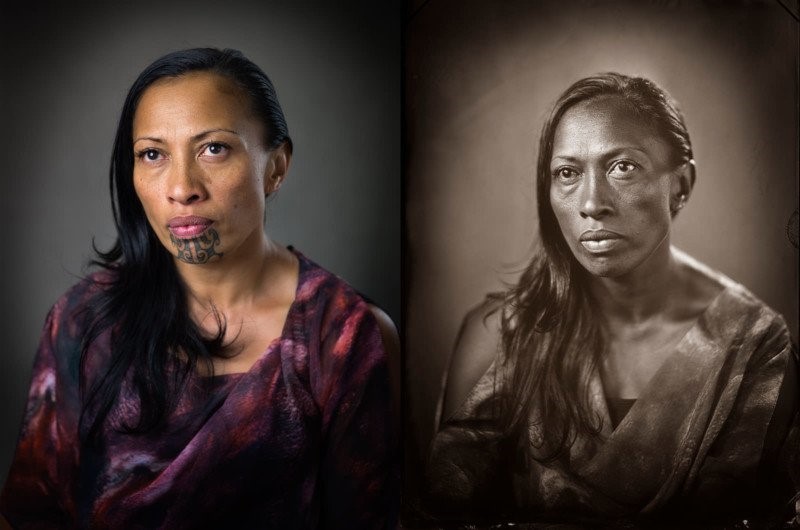
Bradley decided to focus his camera on the indigenous Māori people of New Zealand, whose traditional tā moko tattoos have been making a resurgence.
Tā moko is different from ordinary tattooing because chisels (called uhi are used to carve the skin and opposed to using needles and puncturing. As a result, the skin is grooved rather than smooth in the tattoo areas.
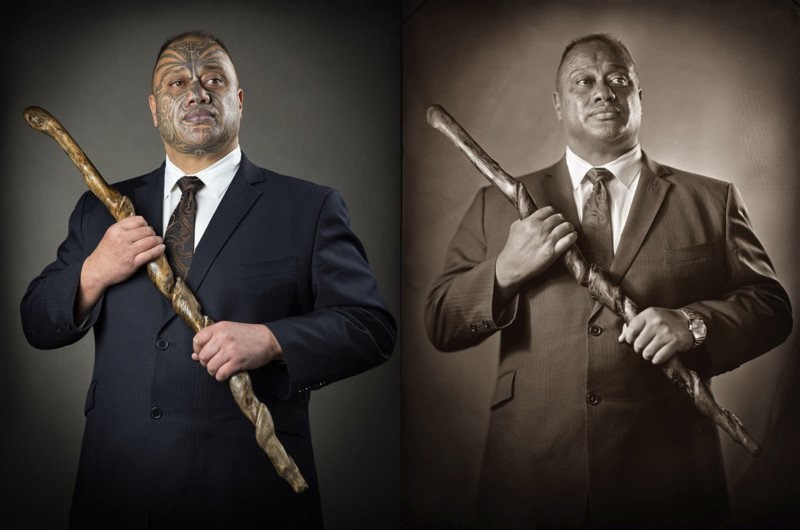
Bradley realized that when photographs of traditional tā moko were captured back in the 1800s, the tattoos themselves barely showed up at all and where therefore lost to history.
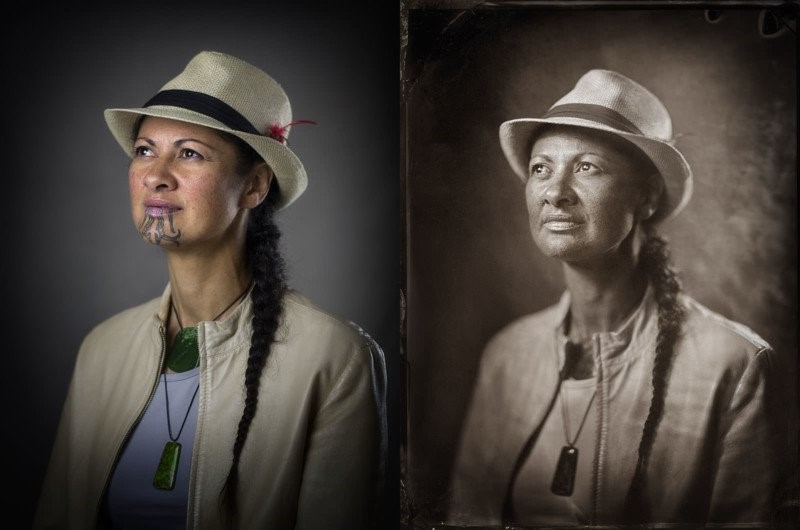
“The wet-plate photographic method used by European settlers served to erase this cultural marker – and as the years went by, this proved true in real life, too,” the project’s statement reads. “The ancient art of tā moko was increasingly suppressed as Māori were assimilated into the colonial world.”
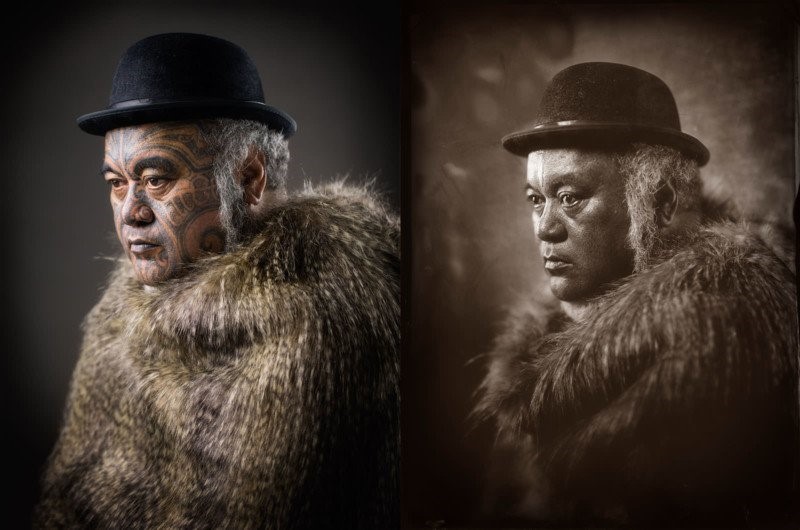
To capture the rebirth of tā moko, Bradley captured two portraits of Māori individuals who have facial tattoos: one with a digital camera to show the tattoos as it looks in real life, and one with the wet plate collodion process to show the same subject without the tattoos.
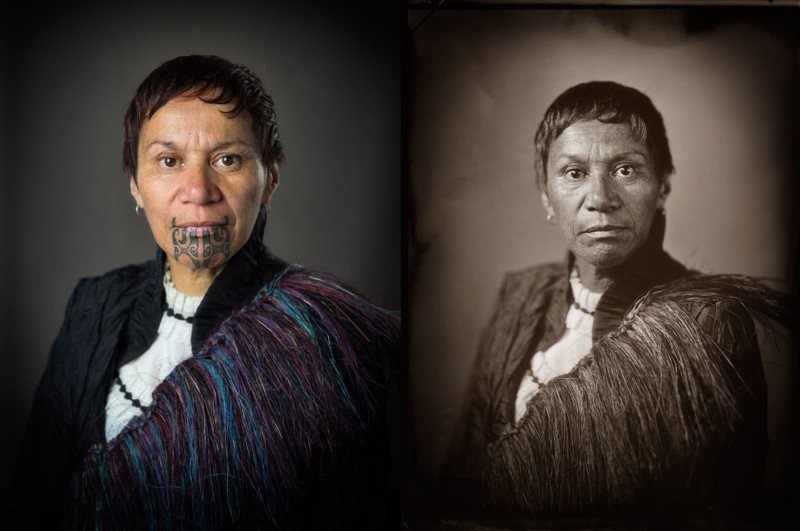
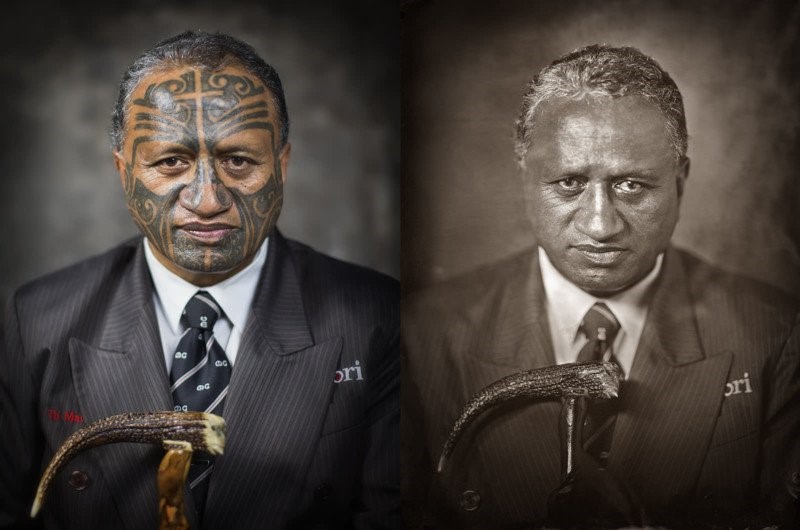
Bradley’s 48 resulting photos (and the videos that accompany them) are currently being exhibited at the Kōngahu Museum of Waitangi in the Bay of Islands, New Zealand, through September 2nd, 2018. You can also find more of Bradley’s work on his website.
Source: petapixel.com | by Michael Zhang
























